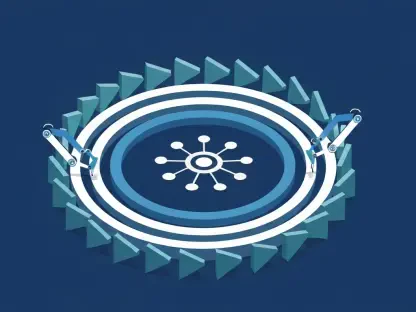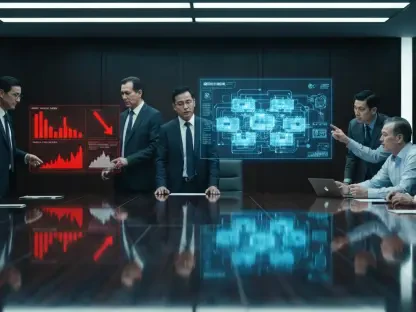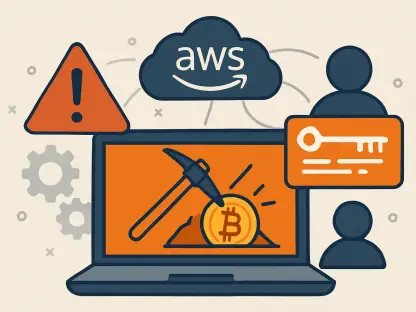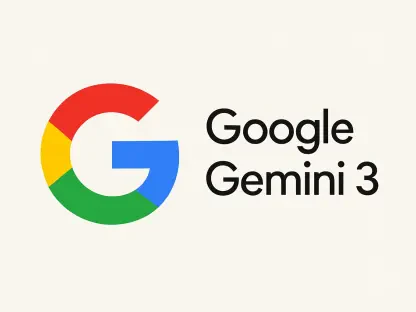The advent of artificial intelligence (AI) in creative industries has posed significant questions regarding authorship, intellectual property, and the management of deepfake content. In a compelling interview, artist Alex Reben and Chandra Rangan, Neo4j’s CMO, provide insights into these pressing themes. They shed light on the philosophical and practical dimensions of AI’s influence on art and media. Their discussion highlights how AI, like historical technological advancements, is being debated for its role in the creative process. They further elaborate on the urgent need to understand and adapt to AI’s evolving capabilities.
The Ambiguity of Ownership in AI-Generated Art
Defining Authorship in the Age of AI
Alex Reben draws an interesting parallel between the emergence of photography and the current influx of AI in art. Just as photography once sparked debates over authenticity and artistic value, AI-generated art has plunged contemporary society into similar dilemmas regarding ownership and creativity. Reben asserts that AI-generated art inhabits a philosophical “gray area.” Unlike traditional art forms, where human input is direct and deliberate, AI art results from intricate algorithms and machine learning processes. This raises the question: who owns AI art? The programmer? The machine? Or the artist who initiated the algorithm?
Reben’s perspective reveals that the blurred lines of authorship in AI-generated work mirror ongoing legal battles and intellectual property disputes. These disputes stem from the nature of creativity itself, which has become increasingly complex with technological advancements. As AI continues to mature, legal frameworks and intellectual property laws must evolve to offer clear guidelines on the matter.
Ongoing Debates and Legal Considerations
The legal considerations surrounding AI-originated creations are still in flux. Courts and lawmakers are grappling with who owns the rights to art generated by an AI system. Existing intellectual property laws were crafted with human creators in mind and may not adequately address the unique characteristics of AI. Furthermore, the philosophical question lingers about whether an AI can truly “create” in the human sense. Artistic creation typically involves intention, emotional expression, and a nuanced understanding of cultural contexts, which AI lacks.
This ambiguity places original human artists and AI developers in uncharted territory. Some advocate for new intellectual property categories designed specifically for AI-generated content. Others argue for reforms within existing frameworks to modernize the definition of authorship and creativity. These ongoing debates underline the need for continuous dialogue among artists, technologists, and legal experts to adapt existing laws to the realities of AI.
Managing Deepfakes in a Technologically Advanced World
The Complexity of Identifying Deepfakes
The proliferation of deepfake technology has added another layer of complexity to the creative and media landscape. Chandra Rangan emphasizes that detecting and managing deepfake content involves intricate technical challenges. While tools exist to recognize AI-generated fakes, these mechanisms must constantly evolve to keep pace with advancements in AI. He notes that each leap in detection technology is met with corresponding advancements in deepfake sophistication, resulting in a technological arms race.
Rangan explains that adaptive strategies are essential for combatting deepfakes effectively. Neo4j’s collaboration with Syracuse University serves as a prime example. They used AI to uncover coordinated misinformation campaigns aimed at influencing perceptions during the 2024 U.S. elections. This collaboration highlights AI’s dual role: while it can be used to deceive, it also possesses the power to reveal hidden patterns and expose falsifications. This duality underscores the necessity for robust, adaptive strategies to manage deepfake technologies.
Ethical and Practical Responses
Beyond technical solutions, managing deepfakes involves ethical considerations. The ethical implications of deepfakes extend beyond mere deception; they can damage reputations, influence public opinion, and destabilize trust in media. Effective solutions must therefore address not only the identification of deepfakes but also their prevention and regulation. Rangan advocates for a multi-faceted approach, combining legislative measures, corporate responsibility, and individual accountability.
Governments, organizations, and individuals must work together to create a comprehensive framework for managing deepfakes. This includes legislative action to criminalize malicious deepfake usage, technological solutions for rapid detection, and public education initiatives to enhance digital literacy. Cooperation across these sectors is crucial for ensuring that the benefits of AI are harnessed responsibly while mitigating its potential harms.
Adapting to AI’s Impact on Employment and Control
The Future of Employment and AI
Reben and Rangan both address the broad implications of AI on employment and advocate for proactive engagement with AI technologies. They suggest that rather than fearing job displacement, individuals should familiarize themselves with AI to better understand its role and capabilities. Staying informed and experimenting with AI can help demystify the technology, reducing fears and fostering a willingness to adapt.
AI is poised to transform various industries by automating routine tasks while freeing up human workers for more complex, creative, and strategic roles. This transformation will necessitate a shift in skill sets, with greater emphasis on AI literacy and adaptability. By embracing AI as a tool rather than a threat, the workforce can navigate this change more smoothly, unlocking new opportunities for innovation and growth.
Regulation and Responsible Usage
The control and regulation of AI involve a balanced approach integrating legislation, self-regulation, and personal accountability. Rangan stresses that effective regulation requires cooperation among individuals, organizations, and governments. Company self-regulation plays a crucial role in ensuring AI technologies are developed and deployed ethically. Organizations must establish internal policies and guidelines to govern AI usage, fostering transparency and accountability.
Simultaneously, legislative action is necessary to provide a robust legal framework for AI governance. Laws and regulations must be designed to protect against misuse while promoting innovation and progress. Educational initiatives are also essential to enhance public understanding of AI, empowering individuals to use AI responsibly and ethically. This holistic approach ensures that AI’s transformative potential benefits society while minimizing risks.
Navigating the Transformative Effects of AI
The rise of artificial intelligence (AI) in creative fields has sparked important questions about authorship, intellectual property, and managing deepfake content. In an engaging interview, artist Alex Reben and Chandra Rangan, Chief Marketing Officer of Neo4j, delve into these crucial topics. They offer valuable perspectives on both the philosophical and practical aspects of AI’s growing impact on art and media.
Reben and Rangan discuss that AI, like past technological innovations, is sparking debate regarding its role in the creative process. They emphasize the critical need to comprehend and adapt to AI’s rapidly advancing capabilities. Their conversation not only addresses how AI affects creative ownership but also how society should prepare for and navigate the ethical and practical challenges brought by this technology. By understanding AI’s potential and limitations, the industry can better manage its influence and ensure that creativity continues to thrive alongside technological progress.









